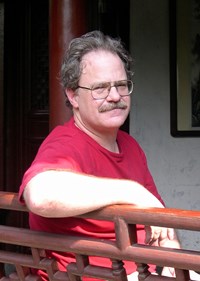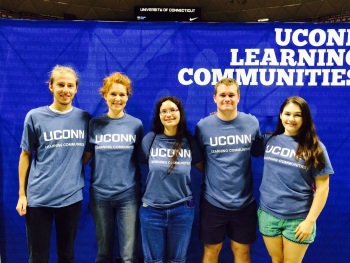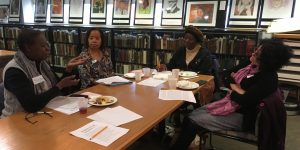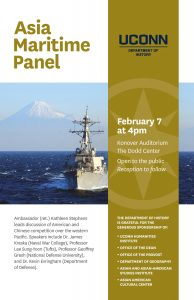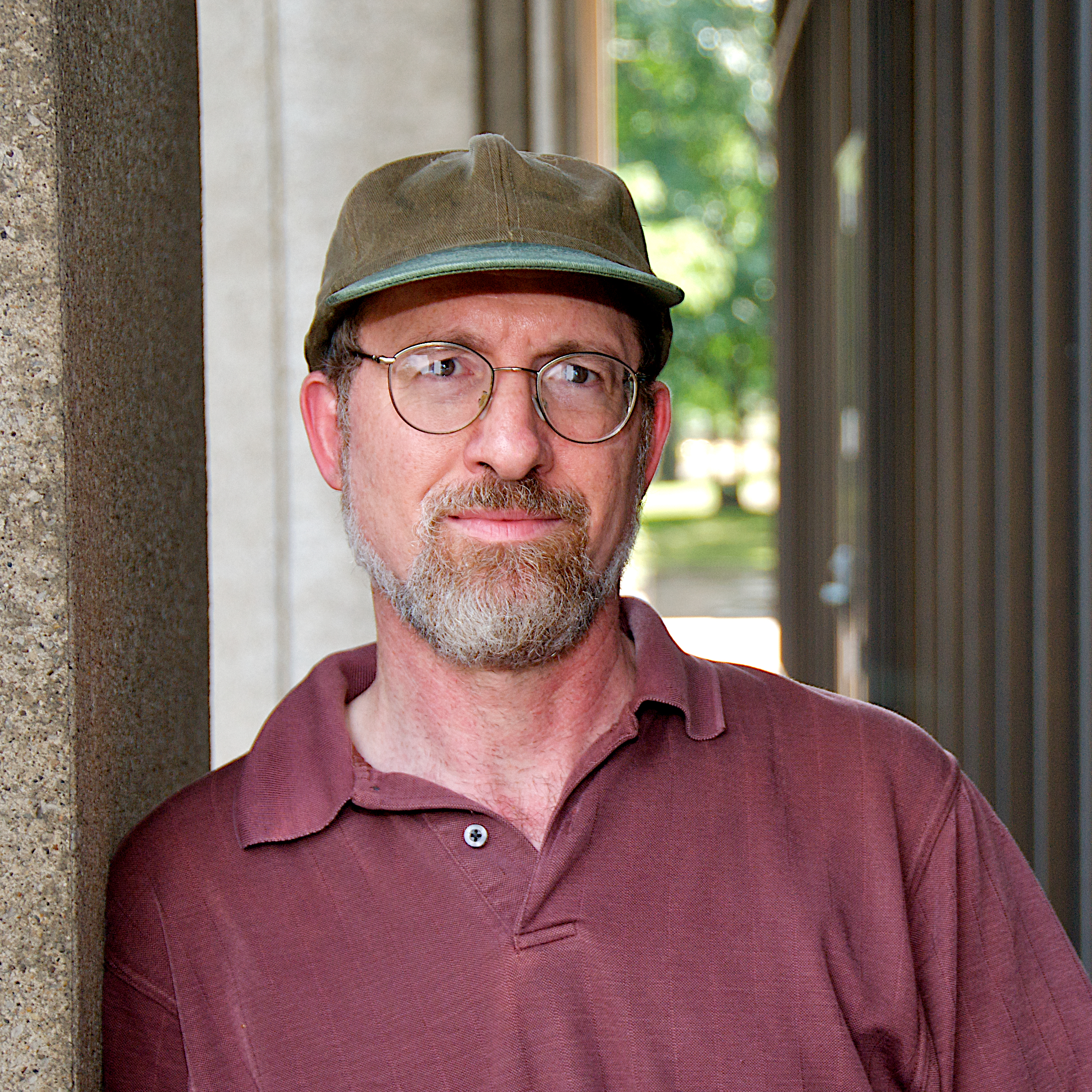 One of the many privileges of being part of the UConn community is the History Department’s access to the impressive scholars at the UConn Humanities Institute (UCHI). This year’s cohort of fellows includes Daniel A. Cohen, Associate Professor of History at Case Western Reserve University. His project, titled “Burning the Charlestown Convent: Private Lives, Public Outrage, and Contested Memories in America’s Civil War Generation,” is a microhistory of the 1834 Convent riot and provides a thought-provoking analysis of sectarian conflict, gender relations, political rivalry, and popular culture in America. The UConn community is lucky to have Professor Cohen with us for the year and the History Department is honored to have conducted a Q&A with him.
One of the many privileges of being part of the UConn community is the History Department’s access to the impressive scholars at the UConn Humanities Institute (UCHI). This year’s cohort of fellows includes Daniel A. Cohen, Associate Professor of History at Case Western Reserve University. His project, titled “Burning the Charlestown Convent: Private Lives, Public Outrage, and Contested Memories in America’s Civil War Generation,” is a microhistory of the 1834 Convent riot and provides a thought-provoking analysis of sectarian conflict, gender relations, political rivalry, and popular culture in America. The UConn community is lucky to have Professor Cohen with us for the year and the History Department is honored to have conducted a Q&A with him.
- Your current project, titled Burning the Charlestown Convent: Private Lives, Public Outrage, and Contested Memory in America’s Civil War Generation, is a microhistory of the 1834 Charlestown, Massachusetts Ursuline convent riot and the contested memory of the event that culminates in the 1854 rise of the nativist Know-Nothing movement in Massachusetts. What inspired you to pursue this project, and how has the experience of researching your previous three books informed your current research approach and writing process?
Originally, I had planned to write a chapter on Rebecca Reed, a key figure in the Charlestown convent controversy, as part of a broader study of “images of working-class women in the early republic.” But as my research into Reed and the Ursulines began yielding all sorts of surprising evidence, I decided to turn the project into a book. By the way, another chapter-length case study envisioned as part of that original project culminated in one of my other books: “The Female Marine” and Related Works (1997). Over the years, most of my scholarship has taken the form of long journal articles (usually thirty to sixty pages in print). That’s the scholarly format or genre with which I’m most comfortable: the long introductions to my two edited volumes were also published as journal articles; most of the chapters of my first monograph, Pillars of Salt, Monuments of Grace (1993), either were, or could have been, published as free-standing pieces; and I’ve published four long journal articles drawn from my current convent project. In terms of methodology, almost all of my past publications, as well as my current project, combine social-historical archival research with analysis of popular print culture. Perhaps because I was trained by expert practitioners of the New Social History but came of age at a time of growing interest in what is sometimes referred to as the New Cultural History (including History of the Book), my own scholarship has tended to straddle that broad disciplinary transition in focus and methods.
- Your Fellows Talk at UCHI, titled “Maria Monk’s Awful Disclosures Reconsidered: From “Me Too” to “Fake News” in the Rise, Fall, and Resurrection of an Anti-Catholic Genre, 1845-1960,” draws a striking comparison between Maria Monk’s “bogus account” of criminal acts in a Canadian convent, which is first dismissed and then resurrected by anti-Catholic presses in the early 1900s, and today’s “fake news” and right-wing media. At what point in the project did this comparison occur to you, and does it reflect a characteristic unique to American society, particularly in regard to the interplay between religion and media?
Some of the parallels between the toxic nativism pervading right-wing political discourse over the past decade and the nativism of the 1830s are simply inescapable. By the mid-1830s, Boston newspapers were filled with complaints about incoming hordes of Irish Catholic immigrants who were supposedly degrading or subverting American culture and values (on both ethnic and sectarian grounds); overwhelming the region’s court dockets, prisons, almshouses, and asylums; burdening taxpayers; taking jobs away from the native-born; and driving down wages—and all of that was before the really massive influxes of the 1840s and 1850s. Sound familiar?
More broadly, there is an analogy to be drawn between the generational “culture wars” of the 1830s through 1850s—involving race (slavery), nativism, and other divisive social issues—and the “culture wars” of the “baby-boomers” that defined the 1960s and have been festering ever since. The “Young America” generation that came of age in the 1830s amid a wave riots (including the burning of the Charlestown convent) and radical social reform movements eventually came to power in the 1850s by tearing the country apart—and provoking the Civil War. A century and a half later, in the election of 2016, the two major presidential candidates—Clinton and Trump—were “baby boomers” whose formative experiences were on opposite sides in the “culture wars” of the 1960s. We still await the denouement. But it is surely no coincidence that all four serious efforts to impeach U.S. presidents have involved one or the other of those two extraordinary American generations (and, in three of the four cases, involved actual members of those generations).
One big difference between then and now is that the “progressives” on race during the antebellum period—the radical abolitionists (mostly evangelical Protestants)—also tended to be the most virulent nativists; today, by contrast, the racists and the nativists are on the same side.
Is the interplay between sectarian conflict and mass media unique to America? Certainly not. The successive waves of virulent anti-Catholic propaganda in the U.S. beginning in the 1830s were closely linked to similar upsurges in the U.K.; and today, of course, kindred varieties of nativist nationalism, often linked to sectarian conflicts, thrive in many countries. Still, the relative openness of the United States throughout most of its history to successive waves of mass immigration by disparate groups has provided unusually dramatic provocations for American nativist movements; conversely, our founding documents and civic traditions provide unusually strong bases for resistance to nativist impulses.
- One of the critiques of “mainstream media” is that it is tied to east coast elites. When describing the presses of the early 1900s anti-convent narratives, you refer to them as “based in such cultural backwaters as Aurora, Missouri, and Milan, Illinois, which catered to the tastes of rural Protestant traditionalists and other bigoted, prurient, or unsophisticated readers.” How does your research help you judge which readers are “unsophisticated”?
I probably fiddled with that sentence in my abstract—and talk—more than any other. I often beseech my students to avoid easy and condescending moral judgments in their historical analysis. Obviously, “bigoted,” “prurient,” and “unsophisticated” are loaded terms—so maybe I should have stuck with “rural Protestant traditionalists.” But Maria Monk’s Awful Disclosures really had been utterly debunked during the 1830s—and some of her “revelations” were fairly implausible on their face. Some of the other claims and conspiracy theories of the anti-Catholic presses of the early 1900s were similarly far-fetched, such as the theory that implicated the Pope in the assassination of Abraham Lincoln. These were the “Pizzagates” of their era. How should one characterize readers who eagerly consume such material? Unsophisticated? Naïve? Gullible? Paranoid?
- What advice do you have to graduate students who also are interested in writing a microhistory?
By way of encouragement, I would point out that digitization has made the archival grunt work involved in researching many microhistories a lot easier than it’s ever been before. About thirty years ago, the great American social historian Paul E. Johnson described to me the many months he’d spent driving around New England—going from archive to archive, court house to court house, town hall to town hall—struggling to reconstruct the perambulations of the shiftless rural shoemaker who figures as the protagonist in “The Modernization of Mayo Greenleaf Patch: Land, Family, and Marginality in New England, 1766-1818” (New England Quarterly, 1982). When he later took a position at the University of Utah, Johnson was amazed to find that virtually all of the archival materials that he had so painstakingly gathered were available on microfilm—under one roof—at the Family History Library in Salt Lake City. Today, many of those same records are accessible to any researcher, anywhere, with an internet connection—via ancestry.com and a few other huge online databases. Students who pursue microhistorical projects, should be sure to take full advantage of such powerful databases through relentless (and creative) key-word searching. The example of “The Modernization of Mayo Greenleaf Patch—one of my all-time favorite microhistories—also suggests a second piece of advice: microhistorical projects are often ideally suited to the essay or article format. Even Natalie Zemon Davis’s The Return of Martin Guerre–perhaps the most famous of all scholarly microhistories—is actually about midway in length between a long article and a short monograph.
